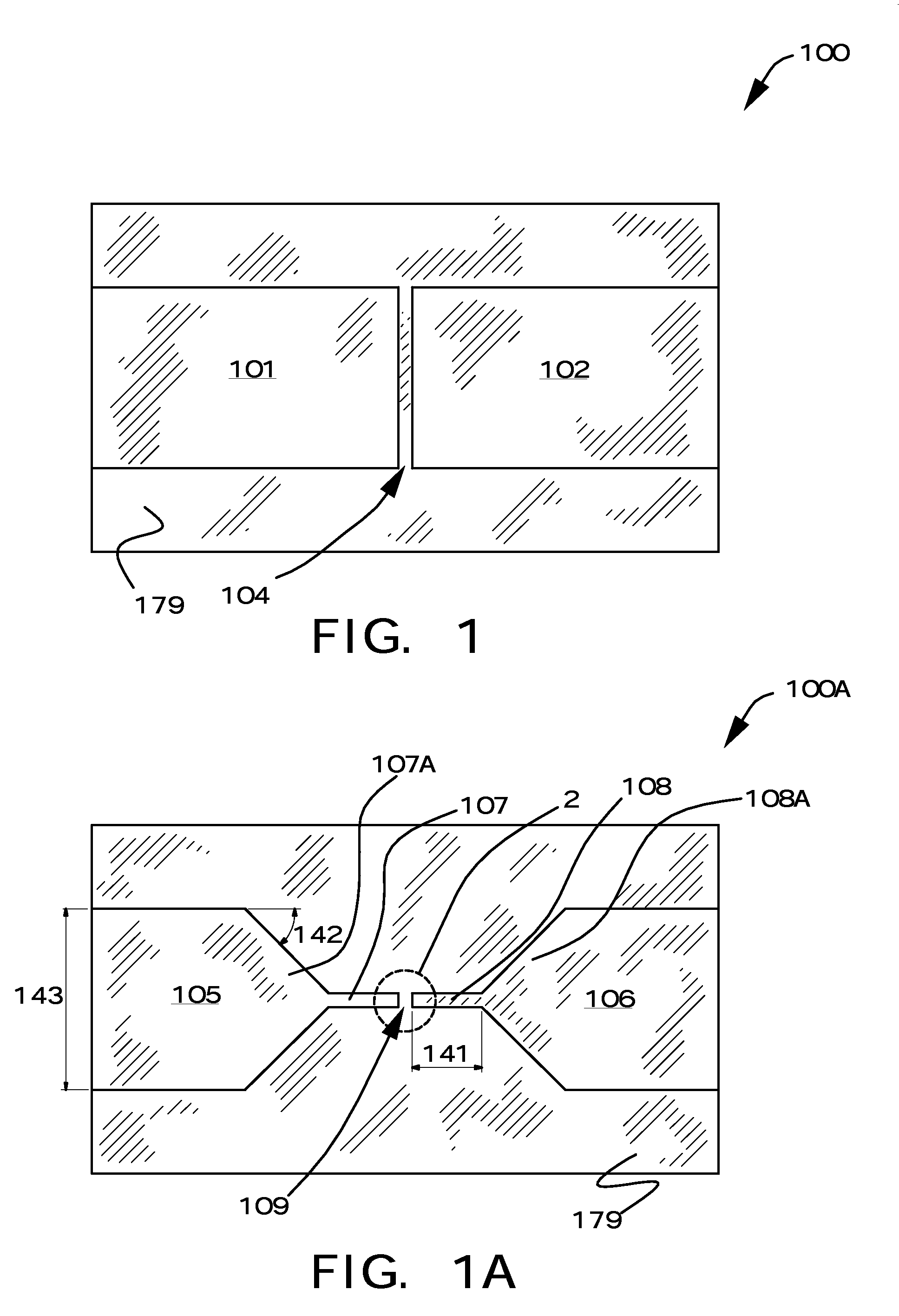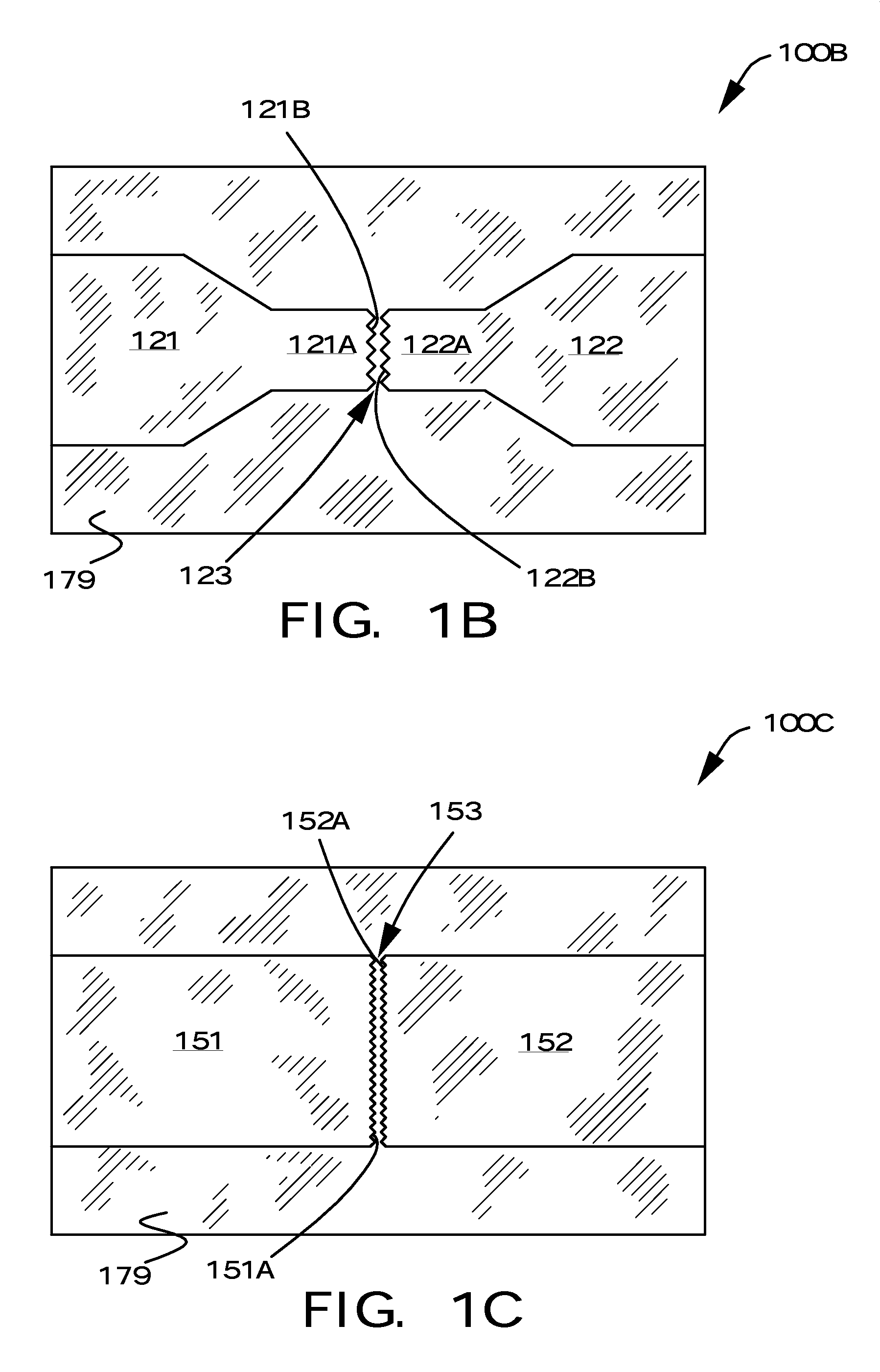Chalcogenide nanoionic-based radio frequency switch
a radio frequency switch and nano-ionic technology, applied in the field ofchalcogenide nano-ionic based radio frequency switches, can solve the problems of high cost, solid-state diodes, complicated manufacturing processes of mems or solid-state based switches, etc., and achieve the effects of low cost, low insertion loss, and easy fabrication
- Summary
- Abstract
- Description
- Claims
- Application Information
AI Technical Summary
Benefits of technology
Problems solved by technology
Method used
Image
Examples
Embodiment Construction
[0065]The fabrication of the nanoionics-based switch is described. A substrate (for example, having high resistivity (>1000 Ohm / cm silicon wafer) is deposited with a layer of binary chalcogenide glass (Col. IV and Col. VI element of the periodic table, e.g., Ge—Se, Ge—S, Si—O). Next, a layer of silver is deposited atop the glass and exposed to ultra violet light to induce a photo-dissolution process. Silver ions migrate into the glass matrix providing the framework for ionic transport and the capability of switching between a low-loss “on” state and a high isolation “off” state. Electrodes of dissimilar metals, one silver (oxidizable) and one inert (e.g., nickel) are deposited atop the chalcogenide layer to complete the switch. The switch also includes a passivation layer to protect it from the environment.
[0066]The electrochemical resistance-change process requires very little energy. Electrolytes are formed in a two step process in which a binary (Ge—Se, Ge—S, Si—O) base glass is ...
PUM
| Property | Measurement | Unit |
|---|---|---|
| width | aaaaa | aaaaa |
| current voltage | aaaaa | aaaaa |
| current voltage | aaaaa | aaaaa |
Abstract
Description
Claims
Application Information
 Login to View More
Login to View More - R&D
- Intellectual Property
- Life Sciences
- Materials
- Tech Scout
- Unparalleled Data Quality
- Higher Quality Content
- 60% Fewer Hallucinations
Browse by: Latest US Patents, China's latest patents, Technical Efficacy Thesaurus, Application Domain, Technology Topic, Popular Technical Reports.
© 2025 PatSnap. All rights reserved.Legal|Privacy policy|Modern Slavery Act Transparency Statement|Sitemap|About US| Contact US: help@patsnap.com



